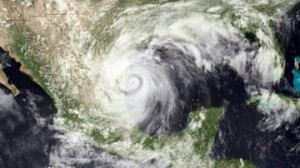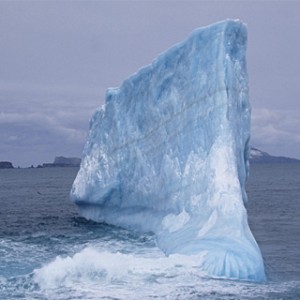Hurricane Alex has temporarily halted cleanup efforts (Reuters). Yet the oil continues to gush unabated. Using the Government’s “Improved Estimate,” 2.8 to 4.8 million barrels have gushed into the Gulf in the MONTHS since the April 20 explosion which killed 11 workers. The explosion and spill have destroyed fisheries, tourism, and profoundly disrupted the ecology of the Gulf. Given that the spill of 35,000 to 60,000 barrels per day continues unabated the extent of the damage is unclear.
In “Blow Up the Well to Save the Gulf,” in the NY Times, 6/22/10, Christopher Brownfield, a former nuclear submarine officer, wrote, “President Obama needs to create a new command structure that places responsibility for plugging the leak with the Navy, the only organization in the world that can muster the necessary team. Then the Navy needs to demolish the well. … At best, a conventional demolition would seal the leaking well completely and permanently without damaging the oil reservoir. At worst, oil might seep through a tortuous flow-path that would complicate long-term cleanup efforts. But given the size and makeup of the geological structures between the seabed and the reservoir, it’s virtually inconceivable that an explosive could blast a bigger hole than already exists and release even more oil.”
President Obama instituted a 6-month moritorium on deepwater drilling. Judge Martin L. C. Feldman of United States District Court, appointed by President Reagan in 1983, stopped the moritorium, writing that the Obama administration had failed to justify the need for such “a blanket … moratorium” on deep-water oil and gas drilling. “The blanket moratorium, with no parameters, seems to assume that because one rig failed and although no one yet fully knows why, all companies and rigs drilling new wells over 500 feet also universally present an imminent danger.” NY Times.
With all due respect to Judge Feldman, the editors at Popular Logistics think that oil, coal, natural gas, mining, drilling, and transport, do present an imminent danger
. Look at the evidence in the Gulf of Mexico, Ecuador, Nigeria, Prince Edward Sound, Montcoal, W. V, upriver of Kingston, Tenn, in the coal mines of China, and in the mercury levels in fish, shellfish, dolphins, and whales. The “Precautionary Principle” dictates that we must stop drilling and figure out to move off fossil fuels.
Notes
- The “improved estimate of the Flow Rate Technical group, of 35,000 to 60,000 barrels per day, announced by Energy Secretary Chu, Interior Secretary Salazar, and Director of the U. S. Geological Survey and Chair of the National Incident Command’s Flow Rate Technical Group (FRTG) Dr. Marcia McNutt on June 15, 2010, is consistent with a scientific analysis of the 70,000 barrels per day reported one month earlier by NPR May 14, 2010 and a “back-of-the-envelope” estimate of 25,000 to 50,000 barrels per day reported in this blog on May 15, 2010.
- The “Precautionary Principle” implies a social responsibility to protect the public and the environment from harm. In general, the burden of proof that an action or policy is not harmful falls on those taking the action. This allows policy makers to take action in the face of limited scientific data.
- The series began after Earth Day and includes Fossil Fuels and a Walk on the Moon, Drill Baby Drill or Drill Baby Oops, Magnitude, Part 1, One Month After, The Chernobyl of Fossil Fuel?, Magnitude, Part 2 and The Deepwater Horizon after the Macondo Well Spill. It will continue indefinitely.



